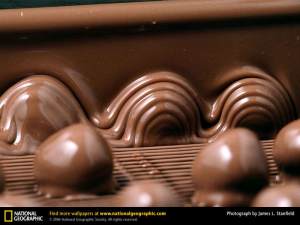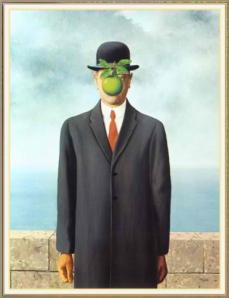An Art Overlooked
by Andrew Swensen
For Aristotle, the highest of art forms was drama. For DaVinci, it was painting. Hegel put poetry at the top, and a few years later, Schopenhauer went for music. Like a parent not wanting to choose between his children, an artist not wanting to choose between the Muses, Wagner envisioned something that was poetic, tragic, musical and visual – all wound together as a total arts experience.
Yet it was not until Proust that someone even brought up the subject of food.
The question of whether to consider food an art is not a frivolous one, though it may seem so at first blush. It presses up against the larger questions of how we characterize anything as an art.

Van Gogh, Still Life with Fifteen Sunflowers. 1888 (Reproduced for educational purposes of illustration).
Art requires at least two elements. First, we need the willful manipulation of some material. It is this requirement that distinguishes art from something of nature that might also have aesthetic qualities. A flower may be beautiful but is not visual art. A stream, rain or wind may produce rhythm, but that does not make it music. People may mistakenly see this distinction as a value judgment, but it is not. The distinction lies not in whether Van Gogh’s sunflower is better than one in your garden, or whether Vivaldi’s stream is better or worse than a brook in the Rockies. Rather, art requires making, which is in fact the etymological origin of the word and thus links it to others of the same root: artisan, artifice, artifact.
Nonetheless, we make many things, and so we need a second element: aesthetic intent. Oscar Wilde famously offers the aphorism, “All art is quite useless.” The phrase is often misinterpreted as a negative judgment, but for him it is high praise. He distinguishes the making of artistic things from things of utility, and his disdain for the latter is as well known as his esteem for the former. For something to be art, one must regard or situate it with a primary aesthetic motivation and not usefulness. Here we distinguish an appealing piece of design, which has aesthetic motivations but has other motivations that supersede it, from art. We have nature’s apple, the logo for the Apple Corporation, and Rene Magritte’s “Son of Man” – all apples, two having aesthetic intent, but only one having primary aesthetic intent (however beautiful it may be, the primary intent of a corporate logo is still branding, which is useful and not useless). Artistic things can have function, and functional things can have artistry. Yet it is a question of priorities.
The idea of aesthetic intent also extends to artists manipulating originally non-artistic but “made” objects, in order to create something that becomes art because of aesthetic motivation. Art fashioned of found objects would fit in here, as would Kossuth’s “One and Three Chairs” or Duchamp’s “readymades.” Kossuth and Duchamp indeed are pushing the aesthetic question in these areas, moving from functionality to artistry, from useful to useless in Wilde’s best sense of the word.
Yet food simply does not come up in aesthetic discussions too often. For all of these conversations on “what is art?” none pushes an intriguing matter in aesthetics. The word “aesthetic” originally referred to the senses, and artistic objects were passing from artist to audience through a sensory act – the visual arts through sight, and music through hearing. The literary arts stand apart for they use an intellectual construct as their medium, language, and yet we accept them as art. But back to visual art and music. We can have an art that is visually pleasing or aurally pleasing, but why consign the other three senses to never having their own art forms? Why can we not have art that is gustatory, olfactory, and tactile?

Godiva Chocolates, Zurich, Switzerland. One of the author’s preferred art forms. (Photo: National Geographic, with link)
If I create something from raw materials – butter, sugar, and cocoa, for example – and I combine them with aesthetic intent, then surely that does not differ conceptually from producing beautiful sound by plucking strings that have been stretched to produce pleasing tones. We have ample evidence over the years of colors and sounds producing psychological effects, and for most of our human history we have also attributed to them metaphysical qualities. Could we not also do the same for things that reach our minds and souls through our other three pathways between the outer world and the inner?
Enter Proust’s madeleine.
[My mother] sent for one of those squat, plump little cakes called “petites madeleines,” which look as though they had been moulded in the fluted valve of a scallop shell. And soon, mechanically, dispirited after a dreary day with the prospect of a depressing morrow, I raised to my lips a spoonful of the tea in which I had soaked a morsel of the cake. No sooner had the warm liquid mixed with the crumbs touched my palate than a shudder ran through me and I stopped, intent upon the extraordinary thing that was happening to me. An exquisite pleasure had invaded my senses, something isolated, detached, with no suggestion of its origin. And at once the vicissitudes of life had become indifferent to me, its disasters innocuous, its brevity illusory – this new sensation having had on me the effect which love has of filling me with a precious essence; or rather this essence was not in me it was me.*
His description of the madeleine bears all the traits of an aesthetic experience.
Yes, food can be art. An apple is of course still an apple, and plenty of the things that we eat, perhaps most things, have useful intentions first and not useless ones. However, as Fallingwater is not just a house, some food is not just food. An artist takes raw materials and fashions something from them with aesthetic motivation and reception. Not only can food be art, it is one form that has the potential to reach all five of our senses. We are accustomed to it reaching three: the gustatory, olfactory and tactile. There is taste of course, but most flavors are actually smell and not taste. While savoring, one also reacts to texture, which is tactile. Typically we have a response to the visual presentation of food as well, and now we are up to four senses. As for sound, food certainly has an aural aesthetic. If you doubt it, talk to someone from Wisconsin about cheese curds, and they will tell you the defining quality is the squeak. The French would have their bread crunch and crackle – and likely have little good to say about the softness of American bread. Ah, but here we have traveled from whether it is art at all to whether it is good art, and a discussion of whether quiet bread is artistic mediocrity will have to wait for another day.
The olfactory alone could even stand the test of artistic definition. If I crush spices and flowers together, mix them with spirits to atomize their aroma, then my act resembles someone who makes sculpture from wood. I have taken plant matter, passed it through an artistic mind, and shaped them into something to appeal to an audience. Yes, perfume and incense as art.
*Marcel Proust, Remembrance of Things Past, Vol. 1, trans. Moncrieff and Kilmartin (New York: Vintage), p. 48.
_____
Other related articles from The Muse Dialogue:
Rachel Hite’s two-part series on food: “The Aesthetics of Food” and “Mimesis and Molecular Gastronomy: The Cognitive Dissonance of Food Art“
For some recommended supplementary reading, consider Chapter 3 of Johah Lehrer’s Proust Was a Neuroscientist, in which he discusses August Escoffier.












Trackbacks & Pingbacks